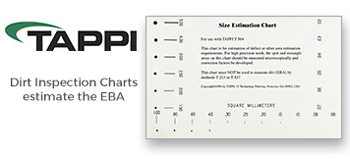 Search
Search
Use the search bar or filters below to find any TAPPI product or publication.
Filters
Content Type
Publications
Level of Knowledge
Collections
Journal articles

Incorporation of electrospun nanofibers into functional structures, International Nonwovens Journal, July 2004, Vol. 13(2) (702KB)
Incorporation of electrospun nanofibers into functional structures, International Nonwovens Journal, July 2004, Vol. 13(2) (702KB)
Journal articles

Editor's Note: Nanotechnology in the news, TAPPI JOURNAL July 2010
Editor's Note: Nanotechnology in the news, TAPPI JOURNAL July 2010
Journal articles

Thermal gravimetric analysis of in-situ crosslinked nanocellulose whiskers â?¢ poly(methyl vinyl ether-co-maleic acid) â?¢ polyethylene glycol, TAPPI JOURNAL April 2011
Thermal gravimetric analysis of in-situ crosslinked nanocellulose whiskers • poly(methyl vinyl ether-co-maleic acid) • polyethylene glycol, TAPPI JOURNAL April 2011
Journal articles

Magazine articles

From biorefineries to bioproducts: conversion of pretreated pulp from biorefining streams to lignocellullose nanofibers, TAPPI Journal April 2019
ABSTRACT: This study investigates the use of pretreatment and enzymatic hydrolysis side streams and conver-sion to lignocellulose nanofibers. We used a steam-exploded and partial enzymatic hydrolyzed hardwood pulp and an organosolv pretreated softwood pulp to prepare lignocellulose nanofibers (LCNF) via microfluidization. The ener-gies applied on fibrillation were estimated to examine the energy consumption levels of LCNF production. The ener-gy consumptions of the fibrillation processes of the hardwood LCNF production and the softwood LCNF production were about 7040-14080 kWh/ton and 4640 kWh/ton on a dry material basis, respectively. The morphology and dimension of developed hardwood and softwood LCNFs and the stability and rheological behavior of their suspen-sions were investigated and are discussed.
Journal articles

Magazine articles

Editorial: Nanocellulose: What's next?
Many of the researchers in this field in the late 1990s and early 2000s were challenged in terms of translation research issues due to the limited production capacity of nanocellulosics on a global stage. To address this call, several pilot-plant production plants have been developed and can now deliver NC on multikilo/ton scale as these issues are gradually being resolved.
Journal articles

Magazine articles

TAPPI Journal Summaries, Paper360º May/June 2018
TAPPI Journal Summaries, Paper360º May/June 2018
Journal articles

Magazine articles

Effects of orders of addition in nanocellulose•cationic starch• colloidal silica systems for papermaking, TAPPI Journal October 2022
ABSTRACT: Two orders of addition were compared when preparing paper handsheets from recycled copy paper furnish in combination with nanofibrillated cellulose (NFC), cationic starch, colloidal silica, and cationic retention aid (cPAM; cationic polyacrylamide). Faster dewatering and higher fine-particle retention were obtained at equal optimized dosages of additives when the colloidal silica was added last, after addition of the cPAM. The same order of addition also provided a higher gain in the paper’s tensile strength. However, higher paper stiffness was achieved when the colloidal silica was instead added to the NFC, after its pretreatment with cationic starch. Results were consistent with the principle that papermaking additives added shortly before sheetforming tend to have the largest effects on drainage and retention. The results also demonstrated a sensitivity to the relative dosages of positively and negatively charged additives.
Journal articles

Magazine articles

Extensive function of green synthesized titania nanoparticles: Photodegradation of Congo red, TAPPI Journal September 2023
ABSTRACT: Several extensive research studies have explored the advantages of green templates in the synthesis of structure and morphology-controlled photocatalytic nanomaterials. This paper compares the abilities of zingiber rhizome extract (ZE) and tapioca starch extracts (TS) in modifying the surface and optical properties of titania nanoparticles (TNP) synthesized by solgel technique. The synthesized nanocatalysts were characterized using various physicochemical techniques. While zingiber (ginger) extract effectively promotes the formation of dual anatase and rutile phases, tapioca extract supports formation of the single anatase phase of titania. These two extracts were examined for the degradation of Congo red in the presence of sunlight. The photomineralization and recyclability of catalysts were evaluated through total organic content analysis. The easy recovery and reusability of zingiber and tapioca biomasses, along with good control over the growth of nanoparticles, enable them to be implicit novel green templates in the successful synthesis of photoactive mesoporous nanotitania.
Journal articles

Market projections of cellulose nanomaterial-enabled products ? Part 1: Applications, TAPPI JOURNAL May 2014
Market projections of cellulose nanomaterial-enabled products ? Part 1: Applications, TAPPI JOURNAL May 2014
Journal articles

Effect of storage conditions on cellulose nanocrystal stability, TAPPI JOURNAL May 2014
Effect of storage conditions on cellulose nanocrystal stability, TAPPI JOURNAL May 2014





